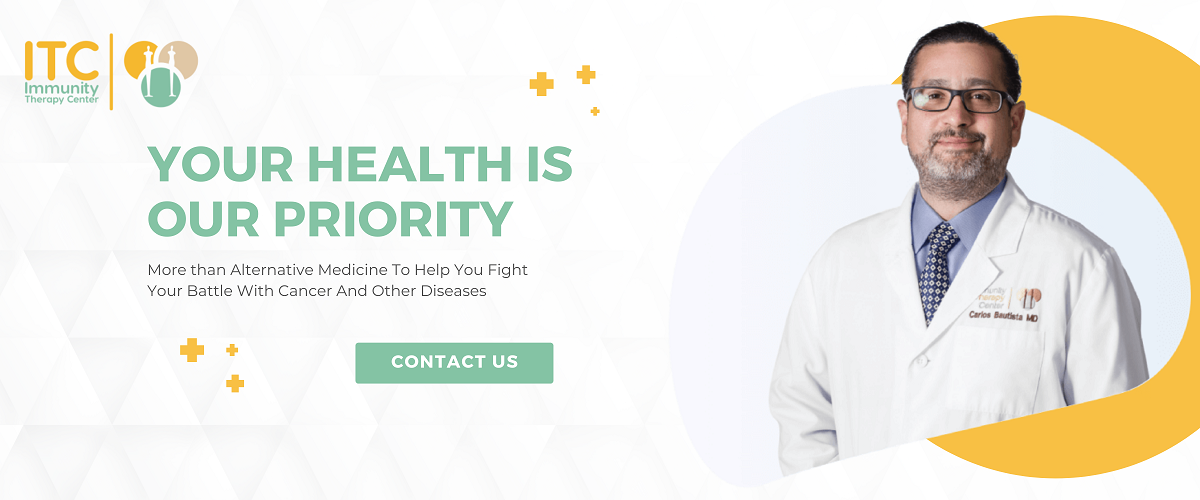First published: April 19, 2021
Oxygen is an ever-important, lung-friendly gas. It is the third most plentiful element in the universe, and it makes up about 21 percent of the Earth’s atmosphere.1 You already know that oxygen is necessary to life, but it may also play an important role in reducing cancer symptoms.
Oxygen therapy is a growing form of cancer treatment. There are numerous types of oxygen therapy, including medical ozone therapy. Learn more about ozone therapy below.
Understanding Oxygen Therapy
Before we get into ozone therapy, let’s first answer the question, what is oxygen therapy?
Oxygen therapy refers to several forms of treatment that involve introducing oxygen into the body to promote physiological benefits. Oxygen ozone therapy has been studied for a wide range of applications, from rheumatoid arthritis to general inflammation. Introducing more oxygen into the body may support healing, reduce inflammation and swelling, and promote blood flow .2
Research on oxygen therapy benefits has also spread to the field of cancer treatment. Studies from human and mouse breast cancer models show that format cells thrive in oxygen-deprived environments.3
Oxygen-starved cancer cells were found to have a survival advantage that allowed them to metastasize better and invade neighboring regions. Putting more oxygen into the body may potentially kill tumor cells and prevent them from spreading. Oxygenation may also increase the effectiveness of other treatments, like radiation therapy and chemotherapy.
There are many different types of oxygen therapy, one of which is ozone therapy.
Understanding Ozone Therapy
“Ozone” can seem intimidating as it is most often associated with the layer of the Earth’s stratosphere. In reality, ozone gas is simply a compound comprising three oxygen atoms. Ozone treatment as an oxygen therapy for cancer focuses on introducing ozone into the body, which increases oxygenation.
Oxygen ozone therapy comes in a few different variations, including ozone injections and insufflations, though the general mechanics are the same. With ozone UVB, a patient’s blood is removed and exposed to ultraviolet rays, which causes an oxidative reaction that results in more ozone in the blood.
The ozonated blood is then injected back into the patient. With ozone autohemotherapy, blood is removed from the patient and injected with ozone directly. This blood is then reintroduced back into the body.
Ozone rectal insufflation involves injecting ozone gas into the rectum. The rectal walls are thin and porous, allowing for faster, more efficient ozone absorption into the bloodstream.
Another type of ozone treatment is IV ozone therapy. It focuses on reducing inflammation and treating chronic fatigue, chronic pain due to rheumatoid arthritis, gum disease, Lyme disease, chronic infections caused by persistent bacteria, and many more.
Ozone Therapy Benefits
Medical ozone therapy offers a wide range of potential benefits. Studies show that ozone is an effective treatment that prevents oxidative stress by normalizing organic peroxide levels within the body and strengthening the immune system.4 It may also activate the antioxidant systems in the body, preventing oxidative stress and cellular damage from free radicals. Studies also suggest that ozone therapy may play a viable role as an adjuvant during chemotherapy and radiation therapy.5
The biggest ozone therapy benefit is its natural noninvasive mode of administration. The process does not require any incisions or anesthetic, which reduces recovery time and reduces risks. The process has also not shown any serious side effects.
Both human and animal models show the potential for oxygenation and ozone therapy treatment in killing cancer cells and reducing cancer symptoms. Consult your doctor to determine if ozone therapy is the right treatment for your needs.
How Ozone Therapy is Used as a Cancer Treatment
Ozone therapy for cancer treatment is gaining recognition as an alternative approach in the battle against cancer.6 This cancer therapy works by increasing the amount of oxygen in the body, which can be detrimental to cancer cells. Cancerous cells typically thrive in low-oxygen environments; by increasing oxygenation through ozone therapy, these cells may be less able to survive and proliferate.
Additionally, ozone therapy can disrupt the metabolic processes of cancer cells, further hindering their growth and spread. Specifically, ozone therapy for cancer involves the administration of medical-grade ozone into the body, which can help enhance the oxygen levels of healthy cells, thereby potentially inhibiting the growth of cancer cells. Moreover, high-dose ozone therapy is known for its minimal side effects, making it a viable option for patients seeking less invasive treatment methods.
Ozone therapy for cancer is also known for its potential to bolster the immune system. By improving the body’s overall oxygenation, it can help strengthen the immune response against cancer cells. This enhancement of the immune system is crucial, as it plays a key role in the body’s natural ability to fight cancer.5
Knowing if Ozone Therapy is Right for You or Your Loved One
Determining whether ozone therapy for cancer is the right choice for you or your loved one can be a complex decision. Key factors to consider include the type and stage of cancer, overall health condition, and any previous cancer treatments undergone. It’s essential to consult with healthcare professionals who can provide a comprehensive evaluation and discuss how ozone therapy may fit into your overall treatment strategy.
At Immunity Therapy Center, we recognize the uniqueness of each patient’s journey with cancer. That’s why we offer free consultations to help you understand if ozone therapy for cancer is a suitable option for you or your loved one. During these consultations, our experts assess your case and provide personalized advice on the best treatment plan, including the potential incorporation of ozone therapy for cancer treatment. These consultations are an opportunity for patients to ask questions, express concerns, and gain a clear understanding of how ozone therapy could benefit their specific situation.
Our goal is to empower you with information and options, allowing you to make informed decisions about your cancer treatment. With a range of therapies available, including ozone cancer treatment, we’re committed to providing individualized care that addresses not just the cancer but the whole person. If you’re considering alternative cancer treatments, reach out to us for a free consultation and take the first step towards exploring comprehensive and personalized treatment options.
Written By: Dr. David Alvarez
Dr. David Alvarez is a Board Certified Medical Doctor from Universidad Xochicalco and Certified by the American Heart Association (Advanced Cardiovascular Life Support).
Dr. Alvarez has been collaborating with Dr. Bautista as an Assistant Medical Director at the Immunity Therapy Center for over 6 years. He provides daily on site patient care and participates on the medical board on research and development of patient treatment plans and programs. Dr. Alvarez is a knowledgeable and compassionate Doctor committed to helping patients get to where they want to be health wise through a more holistic and comprehensive approach.
References:
- NASA. 10 interesting things about air. https://climate.nasa.gov/news/2491/10-interesting-things-about-air/
- Cancer Center. Busting myths: Can hyperbaric oxygen treat cancer? https://www.cancercenter.com/community/blog/2018/06/busting-myths-can-hyperbaric-oxygen-treat-cancer
- NIH. Hyperbaric oxygen therapy and cancer—a review. https://www.ncbi.nlm.nih.gov/pmc/articles/PMC3510426/
- SOHMA. Ozone Therapy, Damaged Cells, & Oxidative Stress. https://www.sohma.org/therapy/ozone-therapy-damaged-cells-oxidative-stress/
- NIH. Ozone Therapy as Adjuvant for Cancer Treatment: Is Further Research Warranted? https://www.ncbi.nlm.nih.gov/pmc/articles/PMC6151231/
- NIH. Ozone Therapy for Tumor Oxygenation: a Pilot Study. https://www.ncbi.nlm.nih.gov/pmc/articles/PMC442111/
At Immunity Therapy Center, our goal is to provide objective, updated, and research-based information on all health-related topics. This article is based on scientific research and/or other scientific articles. All information has been fact-checked and reviewed by Dr. Carlos Bautista, a Board Certified Medical Doctor at Immunity Therapy Center. All information published on the site must undergo an extensive review process to ensure accuracy. This article contains trusted sources with all references hyperlinked for the reader's visibility.

